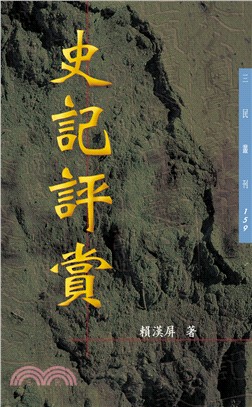商品簡介
目次
1. A Historical Introduction
2. Consequences ofFermi Statistics
2.1 Quantum Statistics of Fermions
2.2 Free Energy of the Fermi Gas
3. Paramagnetism
4. Energy Bands in the Crystal
5. Experimental Basis of Ferromagnetism
5.1 Nickel Alloys
5.2 Iron Alloys
5.3 Palladium Alloys
5.4 Iron-Nickel Alloys
5.5 Effects of Strong Magnetic Fields
5.6 Effects of High Pressure
5.7 Effects of Finite Temperature
5.8 Susceptibility above Tc
5.8.1 Susceptibility of “Classical Spins”
5.9 Critical. Exponents
5.10 Neutron Diffraction
5.11 Further Experimental Methods
6. Weiss Molecular Field Model
6.1 Rhodes-Wohlfarth Plot
7. Heisenberg Model
7.1 Magnon Operators
7.2 Heisenberg Hamiltonian in Magnon Variables
7.3 Magnon Dispersion Relation
7.3.1 Specific Heat of Magnons
7.3.2 Ordering Temperature
7.4 Approximations for the Heisenberg Model
7.4.1 Ising Model
7.4.2 XY Model
7.4.3 Mean Field Solutions of the Heisenberg Model
8. Itinerant Electrons at O K
8.1 Pauli Susceptibility of the Itinerant Electrons
8.2 Susceptibility of the Interacting Itinerant Electrons
8.3 Non linear Effects
8.4 Effects of IIigh Fields at O K
8.4.1 Non-magnetic Limit
8.4.2 Strong Ferromagnets
8.4.3 Weak Ferromagnets
8.4.4 bcc Iron and hcp Cobalt
8.4.5 Extremely High Fields
8.4.6 Metamagnetism
8.5 Susceptibility of Paramagnetic Alloys
9. Band Gap Theory of Strong Ferromagnetism
9.1 Magnetism of Alloys
10. Magnetism and the Crystal Structure——Covalent Magnetism
10.1 Crystal Structure of Mn,Fe,Co,and Ni
10.2 Covalent Magnetism
10.3 Covalent Polarization
11. Magnetic Impurities in an Electron Gas
11.1 Impurity Potential in the Jellium
11.2 Strong Perturbations in the Jellium
11.3 Layer and Line Defects
11.4 Magnetic Impurities and Oscillations of the Magnetization
12. Itinerant Electrons at T〉O: A Historical Survey
12.1 Excitations at Low Temperatures
12.1.1 Strongly Ferromagnetic Systems
12.1.2 Weakly Ferromagnetic Systems
12.2 Stoner Theory for a Rectangular Band
12.3 Weak Excitations with ζ〈〈1
13. Hubbard Model
13.1 Beyond Hartree-Fock
14. Landau Theory for the Stoner Model
14.1 General Considerations
14.2 Application to the Stoner Model
15. Coupling Between Itinerant and Localized Moments
16. Origin of the Molecular Field
16.1 Heitler-London Theory for the Exchange Field
16.1.1 Magnetism of a Spin Cluster
16.1.2 Spinwaves for Localized Electrons
17. Exchange and Correlation in Metals
17.1 Free Electron Gas
17.2 Tightly Bound Electrons
18. Spin Fluctuations
18.1 Fluctuations of a Thermodynamical Variable
18.2 Fluctuations of the Magnetic Moment
18.3 Specific Heat of the Spin Fluctuations
18.4 Magneto-Volume Coupling
18.5 Applications of the Spin Fluctuation Model
18.6 Comparing the Spin-Fluctuation and the Stoner-Model
19. Single Particle Excitations Versus Spin Waves
20. Landau-Ginzburg Model for Spin Fluctuations
21. Conclusion and Lookout
A. Appendices
A. Convexity Property of the Free Energy
B. Derivation of the Coefficient a in (3.17)
C. Quenching of the Orbital Momentum
D. Properties of “Classical” Spins
E. Derivation of the Constant c in (8.24)
F. Ornstein-Zernicke Extension
G. Bogoliubov-Peierls-Feynman Inequality
H. The Factor 2 in Equation (7.27)
I. Hund‘s Rules
J. Polynomial Coefficients in (18.12)
K. Conversion Between Magnetic Units
References
Index
主題書展
更多書展今日66折
您曾經瀏覽過的商品
購物須知
大陸出版品因裝訂品質及貨運條件與台灣出版品落差甚大,除封面破損、內頁脫落等較嚴重的狀態,其餘商品將正常出貨。
特別提醒:部分書籍附贈之內容(如音頻mp3或影片dvd等)已無實體光碟提供,需以QR CODE 連結至當地網站註冊“並通過驗證程序”,方可下載使用。
無現貨庫存之簡體書,將向海外調貨:
海外有庫存之書籍,等候約45個工作天;
海外無庫存之書籍,平均作業時間約60個工作天,然不保證確定可調到貨,尚請見諒。
為了保護您的權益,「三民網路書店」提供會員七日商品鑑賞期(收到商品為起始日)。
若要辦理退貨,請在商品鑑賞期內寄回,且商品必須是全新狀態與完整包裝(商品、附件、發票、隨貨贈品等)否則恕不接受退貨。
























